
Measuring the impact of a multi-vendor testing ecosystem

In this article, we uncover the transformative potential of uniting a multi-vendor testing ecosystem within a cohesive testing ecosystem. Picture a tapestry of expertise, where each thread contributes to a stronger, more resilient whole. This isn’t just about efficiency; it’s about redefining what’s possible in desenvolvimento de software.
By embracing a multi-vendor testing ecosystem, you’re not just choosing a path; you’re embracing a philosophy. It’s a philosophy that creates quality, nurtures innovation, and empowers your team to achieve greatness.
This guide will help you, unlock the power of collaboration and pave the way for unparalleled success in your software testing endeavors. Here’s how we will break it down:
Step 1 – Ecosystem mapping and vendor selection
Step 2 – Integration framework development
Step 3 – Customizable testing workflows
Step 4 – Aggregated data analysis and reporting
Step 5 – Continuous ecosystem expansion and optimization
Step 6 – Feedback loop for service improvement
Let’s dive deeper!
Step 1: Ecosystem mapping and vendor selection
Addressing a wide range of testing needs requires a diverse ecosystem of vendors. Each type of testing—whether it’s technical skills assessments, personality testing, or compliance testing—serves a specific purpose and contributes to a comprehensive understanding of resources, risks, and capabilities within an organization. Here’s how to do it:
Mapping out the testing ecosystem
To effectively manage and utilize this ecosystem, your organization should use a digital platform to map out and visualize the entire landscape of testing vendors.
According to a survey by Forbes Insights, 92% of executives believe that collaboration is crucial for success in today’s business
This mapping should categorize vendors according to their specialization, highlighting their unique testing services and how they align with the organization’s specific needs.
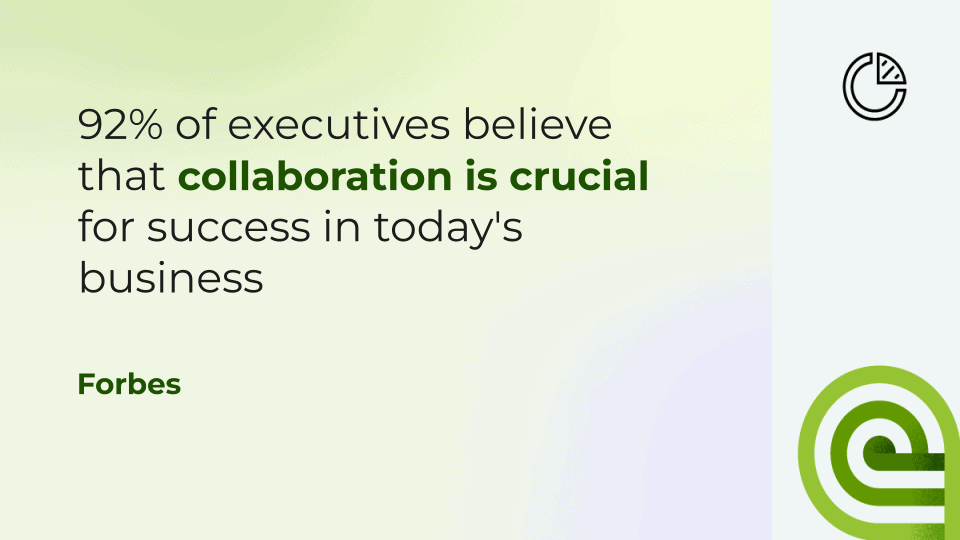
Action steps for vendor selection
Vendor categorization
Begin by categorizing vendors based on the types of testing they specialize in. This categorization helps in quickly identifying which vendors can meet specific testing needs, such as technical skills, personality traits, or compliance with regulatory standards.
Assessment of quality and reliability
Evaluate potential vendors on the quality and reliability of their testing services. This process can include reviewing historical performance data, client testimonials, and certifications or accreditations affirming their standing in the industry.
Integration capabilities
Consider the technical and logistical capabilities of each vendor, particularly their ability to integrate seamlessly with the organization’s existing systems. Effective integration reduces complexity and enhances the efficiency of data management and analysis.
Selection criteria establishment
Define clear selection criteria that include cost-effectiveness, user experience, technological innovation, and customer support. Use these criteria to assess and select the most suitable vendors for your ecosystem.
Vendor engagement and negotiation
Engage with chosen vendors to discuss terms and conditions. Negotiate aspects such as pricing, support levels, and specific service customizations to ensure the arrangements meet the organization’s needs.
Implementation of vendor management tools
Implement vendor management tools on your platform to monitor and evaluate vendor performance continuously. These tools can help track compliance, service quality, and overall contribution to organizational objectives.
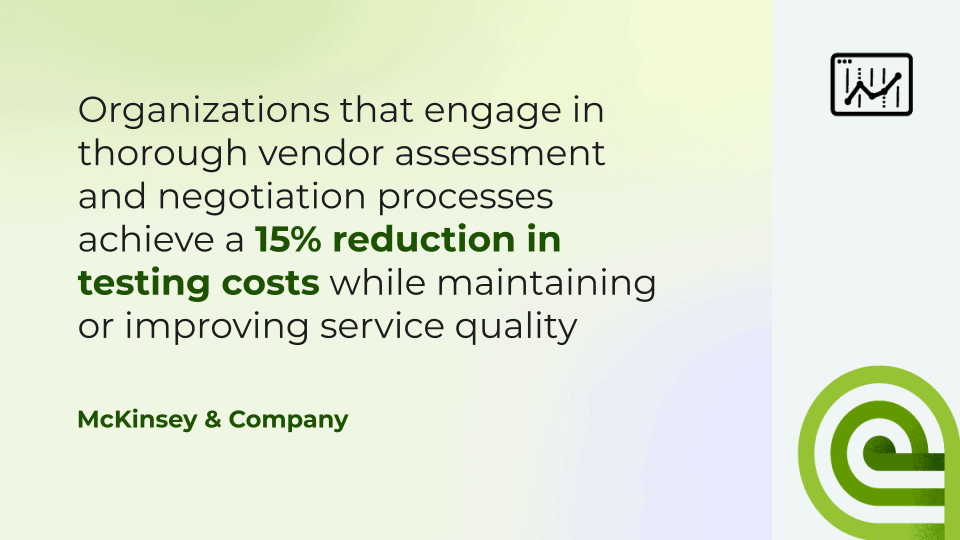
A well-structured testing ecosystem, supported by a diverse array of carefully selected vendors, ensures that organizations can address all their testing needs effectively and efficiently.
By having access to specialized vendors who are leaders in their respective fields, organizations can benefit from high-quality testing services that are integral to making informed decisions, enhancing employee development, and maintaining compliance.
This strategic approach to vendor selection and ecosystem mapping not only optimizes the testing processes but also supports business.
Step 2: Integration framework development
As organizations increasingly rely on a variety of testing services to evaluate and manage skills, creating an efficient framework for integrating these services into a central skills management platform becomes essential.
This integration ensures that data flows seamlessly and securely across systems, providing a cohesive and intuitive user experience. Let’s see how to do it:
Develop an API-based integration framework
The use of Application Programming Interfaces (APIs) is critical in the development of an integration framework that can effectively link the organization’s platform with the systems of selected testing vendors.
Action steps for building the integration framework
API design and specification
Start by designing and specifying APIs that will facilitate the exchange of data between the skills management platform and the vendors’ systems. Ensure that these APIs are robust, secure, and capable of handling the types of data exchanges required for the various testing services.

Security protocols implementation
Incorporate strong security protocols into the API design to protect data integrity and privacy. This includes using secure communication channels, authentication mechanisms, and data encryption to safeguard sensitive information.
Vendor collaboration
Work closely with selected vendors to understand their system capabilities and requirements. This collaboration ensures that the APIs developed are compatible with vendor systems and can support necessary functionalities such as data retrieval, updates, and synchronization.
User experience focus
Design the integration with a strong focus on user experience. Ensure that the interactions between the skills management platform and the testing services are smooth, intuitive, and minimally disruptive to the user. Consider aspects such as user interface design, system response times, and error handling.
Testing and validation
Conduct thorough testing of the API connections with the vendor systems. This includes testing for functionality, performance, and security. Use this phase to validate that the integration meets all technical requirements and user expectations.
Documentation and support
Provide comprehensive documentation for the integration framework. This documentation should include detailed instructions for future integrations, troubleshooting guides, and support contact information.
Offer training to technical staff and end-users to familiarize them with the new system functionalities.
Ongoing evaluation and updates
Once the integration is operational, establish mechanisms for ongoing evaluation and updates. Monitor the integration’s performance and user feedback to identify areas for improvement.
Regularly update the integration framework to accommodate system upgrades, new vendor services, or changes in testing requirements.
A well-developed integration framework enables organizations to leverage multiple testing services efficiently, enhancing the capabilities of their skills management platform.
This approach not only improves data accuracy and decision-making but also enhances the overall strategic management of employee skills.
With seamless integration, organizations can ensure that they remain agile and responsive to the evolving needs of their workforce and the dynamics of the marketplace.
Step 3: Customizable testing workflows
To maximize the effectiveness of testing services integrated into a skills management platform, organizations must have the flexibility to customize these workflows according to their specific operational needs.
Customizable workflows allow organizations to tailor testing processes to better align with their strategic objectives and the unique requirements of different roles within the company. Here’s how to do it:
Implementing customization tools on the platform
The implementation of robust tools within the platform that facilitate the creation, customization, and management of testing workflows is crucial.
These tools should provide a user-friendly interface that empowers customers to seamlessly integrate services from various testing vendors into cohesive workflows.
Action steps for developing customizable testing workflows
Workflow design interface
Develop a flexible design interface within the platform that allows users to easily construct and modify testing workflows. This interface should support drag-and-drop functionality, template use, and easy integration of tests from multiple vendors.
Workflow configuration options
Include extensive configuration options that allow users to define the sequence of tests, the conditions under which specific tests are triggered, and the handling of test results. This level of detail enables organizations to design workflows that are truly tailored to their assessment strategies.
Integration of vendor services
Ensure that the platform can seamlessly incorporate testing services from different vendors within the workflows. This should include capabilities to adjust settings for each test according to vendor specifications and requirements.
Real-time testing management
Implement features that allow real-time management of testing workflows. Users should be able to start, stop, and modify workflows as needed based on real-time assessment needs and emerging insights.
Automated reporting and analytics
Incorporate automated reporting and analytics tools that provide insights into the effectiveness and efficiency of the testing workflows. These tools should help organizations track performance, identify bottlenecks, and optimize the testing process.
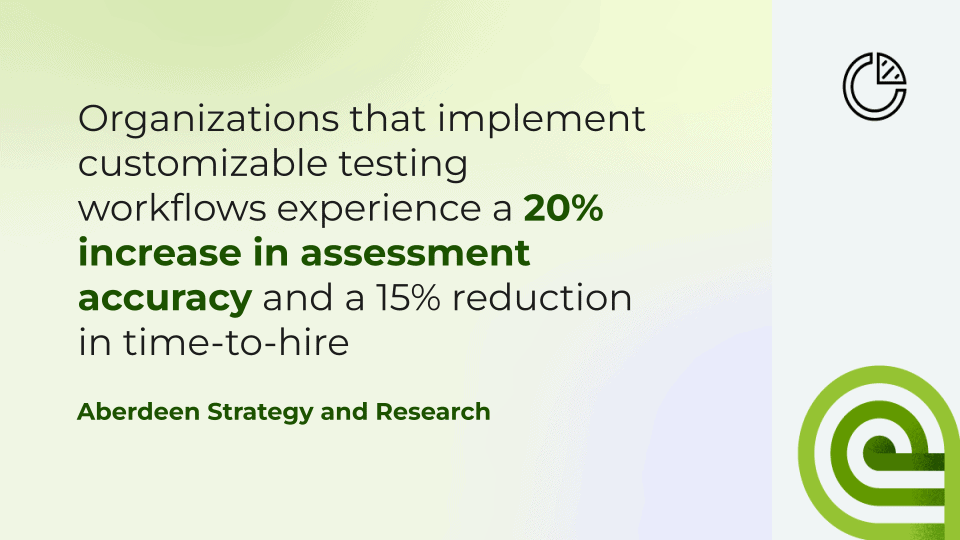
User training and support
Provide comprehensive training for users on how to use the customization tools effectively. Offer ongoing support to help resolve any issues that arise during the setup and execution of customized testing workflows.
Feedback mechanism for continuous improvement
Establish a feedback mechanism that encourages users to provide input on the usability and functionality of the customization tools. Use this feedback to make continual improvements to the platform.
Customizable testing workflows offer several benefits to organizations. They enhance the relevance and effectiveness of the testing process by allowing organizations to match assessment strategies with job roles and candidate profiles precisely.
Customization also increases efficiency by enabling the automation of complex sequences of tests, reducing administrative overhead and speeding up the assessment process.
Furthermore, tailored testing workflows can improve the candidate and employee experience by ensuring that assessments are relevant and appropriately challenging, thereby enhancing engagement and reducing test fatigue.
By providing these customizable options, the platform not only meets the diverse needs of different organizations but also supports them in achieving more accurate and meaningful assessment outcomes, ultimately leading to better-informed hiring and development decisions.
Step 4: Aggregated data analysis and reporting
In this step, you’ll learn how your organization can transform by effectively aggregating and analyzing testing data from diverse sources.
Adopt the power of a unified data view to enhance your decision-making processes, ensuring you are fully equipped to elevate hiring, training, and development strategies. Let’s delve into how our platform can help you achieve this.
The ability to aggregate and analyze testing data from multiple sources is invaluable for organizations looking to make informed decisions about hiring, training, and development. By consolidating data from various tests conducted by different vendors, organizations can gain a holistic view of candidate or employee capabilities and performance. Let’s break down the steps:
Utilize the platform for data aggregation and analysis
The implementation of tools within a platform that can effectively aggregate and analyze testing data is crucial. This enables organizations to transform disparate data sets into actionable insights, providing a robust basis for strategic decision-making.
Action steps for effective data analysis and reporting
Data integration
Ensure that the platform has capabilities to seamlessly integrate and synchronize data from various testing vendors. This integration should be capable of handling different data formats and structures, ensuring that all data is accurately captured and stored.
Advanced analytics tools
Incorporate advanced analytics tools within the platform that can process and analyze the aggregated data. These tools should include functionalities for statistical analysis, trend detection, and predictive modeling, enabling deep insights into workforce capabilities and potential.
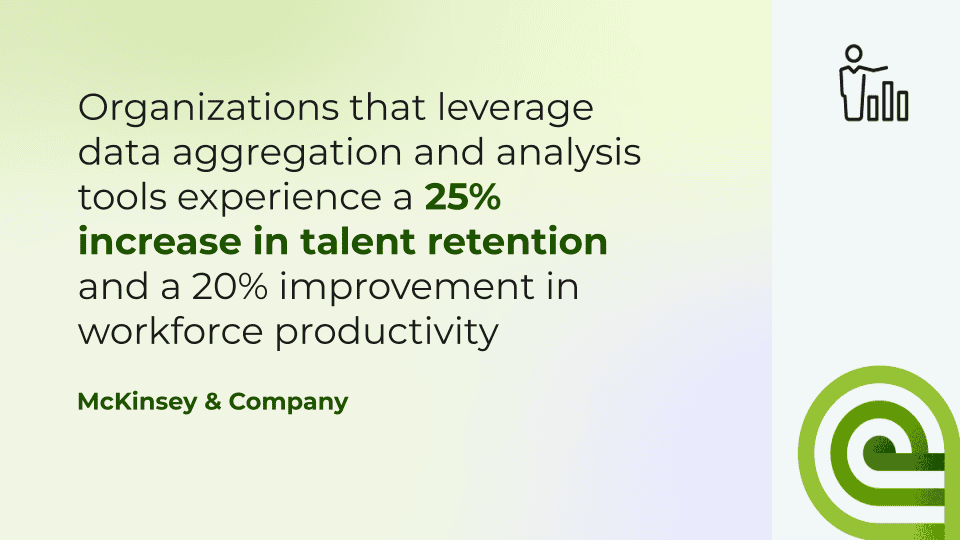
Customizable reporting
Develop customizable reporting features that allow organizations to select and focus on specific data points that are most relevant to their strategic goals. These reports should be easily adjustable to accommodate different analytical needs, such as detailed reports for individual assessments or summarized data for overall performance trends.
Visualization capabilities
Implement data visualization tools that can transform complex data sets into clear, intuitive graphical representations. Visualizations such as dashboards, heat maps, and scatter plots can help stakeholders quickly understand and interpret the data, facilitating faster and more effective decision-making.
Real-time reporting
Provide real-time reporting capabilities so that organizations can immediately assess and respond to the latest data insights. This timeliness is particularly crucial in dynamic scenarios such as high-volume recruiting or ongoing development programs.
Security and compliance
Ensure that all data aggregation, analysis, and reporting processes comply with relevant data protection regulations and organizational security policies. Maintaining the integrity and confidentiality of testing data is essential to safeguard sensitive information and build trust among users.
Insights sharing and collaboration
Enable easy sharing of insights and reports among stakeholders through the platform. This feature should support collaboration by allowing users to discuss findings, make annotations, and suggest actions directly within the reporting environment.
By aggregating and analyzing data from multiple testing sources, organizations can enhance their understanding of employee profiles, identify skill gaps more accurately, and tailor development programs to better meet individual and organizational needs.
Consolidated reports and insights help in making informed decisions that can lead to more effective hiring, targeted training initiatives, and strategic workforce planning. This holistic approach not only improves individual and organizational performance but also drives continuous improvement through data-driven insights.
Step 5: Continuous ecosystem expansion and optimization
For organizations to stay competitive and responsive to evolving market demands, it is essential to keep their testing ecosystem dynamic, relevant, and aligned with emerging assessment needs.
This continuous evolution ensures that the testing services remain effective and are capable of addressing the latest challenges and opportunities in talent management. Here’s how to do it:
Action Steps for Ecosystem Expansion and Optimization
Regular ecosystem reviews
Schedule regular reviews of the testing ecosystem to evaluate its effectiveness and relevance. These reviews should assess how well the current testing services meet organizational needs and identify areas where new types of assessments might be required.
Incorporate customer feedback
Utilize customer feedback as a primary driver for changes within the ecosystem. Feedback can highlight areas of satisfaction and dissatisfaction with current testing services, suggesting where improvements or new offerings are needed.
Monitor industry trends
Stay informed about the latest trends in testing and assessment technologies. This includes advancements in psychometric testing, artificial intelligence applications in assessments, and new methodologies for measuring skills and competencies.
Use this information to guide the introduction of innovative testing services into the ecosystem.
Evaluate new vendors and services
Continuously scout for new testing vendors and services that can enhance the ecosystem. Evaluate these potential additions based on their technological sophistication, reliability, customer reviews, and alignment with the organization’s strategic goals.
Update and integrate new services
Once new vendors or services are selected, integrate them into the existing platform. Ensure that new services mesh seamlessly with current offerings, both technically and in terms of user experience.
Training and communication
Provide training for both users and administrators whenever new testing services are added to the ecosystem. Communicate updates regularly to all stakeholders to ensure they are aware of new capabilities and understand how to utilize them effectively.
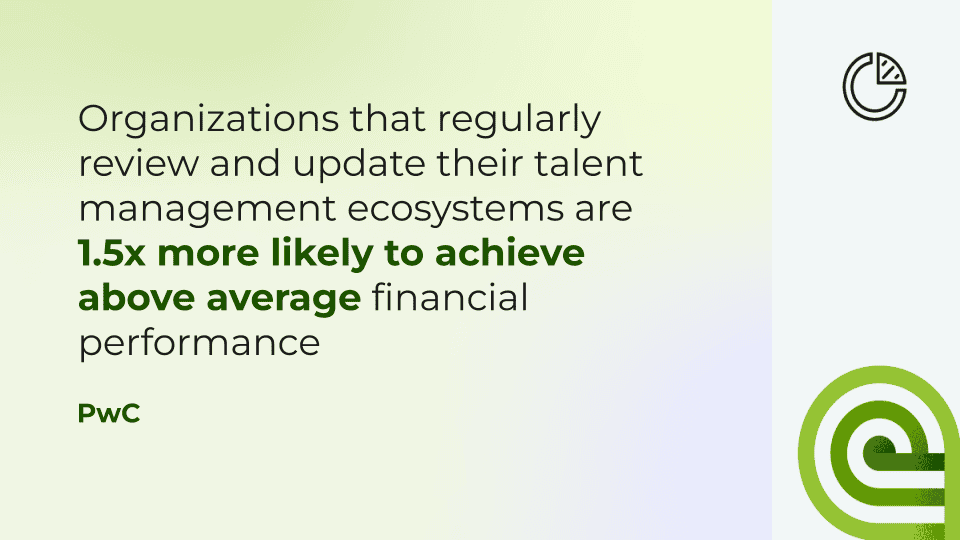
Performance tracking and optimization
Implement mechanisms to track the performance and impact of new testing services. Analyze usage patterns, satisfaction levels, and the tangible outcomes derived from these services. Use this data to continuously optimize the testing ecosystem, phasing out less effective tools and scaling up those that deliver substantial value.
By actively maintaining and expanding the testing ecosystem, organizations can ensure that their assessment capabilities keep pace with the rapid changes in workplace dynamics and technology.
This proactive approach not only enhances the precision and relevance of the assessments but also contributes to a more engaged and well-understood workforce.
Continuous ecosystem optimization helps in delivering a robust platform that not only meets current assessment needs but also anticipates future demands, thereby supporting sustainable organizational growth and development.
Step 6: Feedback loop for service improvement
To maintain and enhance the quality and effectiveness of the testing ecosystem, establishing a robust feedback loop is essential.
This loop allows organizations to capture direct insights from users about their experiences with various testing services, providing valuable data that can be used to continuously refine and optimize the ecosystem.
Follow these steps:
Action steps for establishing a feedback loop
Integrate feedback mechanisms
Implement integrated feedback mechanisms within the platform that allow users to easily rate and review the testing services provided by various vendors. Ensure these mechanisms are user-friendly and accessible immediately after the completion of a test or assessment.
Encourage regular feedback submission
Actively encourage users to provide feedback by making the process straightforward and by highlighting the value of their input in improving testing services. Consider incentivizing feedback submission to increase engagement and response rates.
Analyze feedback data
Regularly collect and analyze the feedback data to identify patterns, trends, and areas for improvement. Pay particular attention to recurrent issues or highly praised features, as these can indicate critical strengths and weaknesses in the testing services.
Vendor performance reviews
Use the feedback to conduct performance reviews of the vendors. Assess their service quality, reliability, and user satisfaction levels. Share these reviews with the vendors to help them understand how they are performing and where they can improve.
Optimize the ecosystem based on insights
Based on the insights gained from user feedback, make informed decisions about which services to enhance, which to maintain, and which may need to be replaced. Use this information to optimize the testing ecosystem continuously, ensuring it always meets the highest standards of quality and effectiveness.
Transparent reporting and updates
Keep all stakeholders informed about the feedback received and the actions taken in response. This transparency builds trust and ensures that users feel their input is valued and impactful.
Continuous improvement culture
Foster a culture of continuous improvement within the organization by regularly highlighting how user feedback has led to tangible enhancements in the testing services. This not only motivates further participation in the feedback process but also reinforces the organization’s commitment to quality and excellence.
Benefits of a feedback loop for service improvement
Implementing a feedback loop within the testing ecosystem offers several benefits:
- Enhanced service quality: Continuous user feedback helps maintain high standards of service quality, as it enables immediate identification and correction of issues.
- Increased user satisfaction: By actively soliciting and responding to user feedback, organizations can make users feel heard and valued, which increases overall satisfaction and loyalty.
- Data-driven decision-making: Feedback provides a rich source of data that can inform strategic decisions about the testing ecosystem, ensuring that resources are allocated effectively and that services align with user needs.
- Vendor accountability: Regular feedback and reviews promote accountability among vendors, pushing them to uphold high standards and strive for ongoing improvement.
By establishing and maintaining an effective feedback loop, organizations can ensure that their testing ecosystem not only meets current user expectations but is also well-positioned to adapt to future demands and challenges.
Final word
Embracing a multi-vendor testing ecosystem is not merely about enhancing the technical capabilities of your organization—it represents a strategic pivot towards a more innovative, resilient, and efficient way of managing talent assessments.
Through the detailed steps outlined—from ecosystem mapping and vendor selection to integrating a robust feedback loop—this approach enables your organization to leverage a diverse pool of expert resources effectively.
By continuously refining the system based on real-world feedback and emerging industry trends, your organization can maintain its competitive edge, ensure alignment with dynamic market demands, and foster an environment where quality and innovation are at the forefront of talent management.
It’s time to take decisive action and begin the development of your testing ecosystem. Harness the collective expertise of top-tier vendors, integrate cutting-edge technologies, and cultivate a culture of continuous improvement. Your commitment to this process will not only enhance your strategic capabilities but also propel your organization toward unprecedented levels of achievement and recognition of talent development.
Start today—map out your ecosystem, engage with selected vendors, and set the foundation for a future where your organization leads with innovation and excellence. Let’s pave the way for a future that is not only successful but truly revolutionary. If you’re ready to see how DevSkiller can revolutionize your talent assessment processes, we invite you to experience a demo for yourself. Dive deep into our platform’s capabilities and discover how we can help you effectively manage a multi-vendor testing ecosystem.




